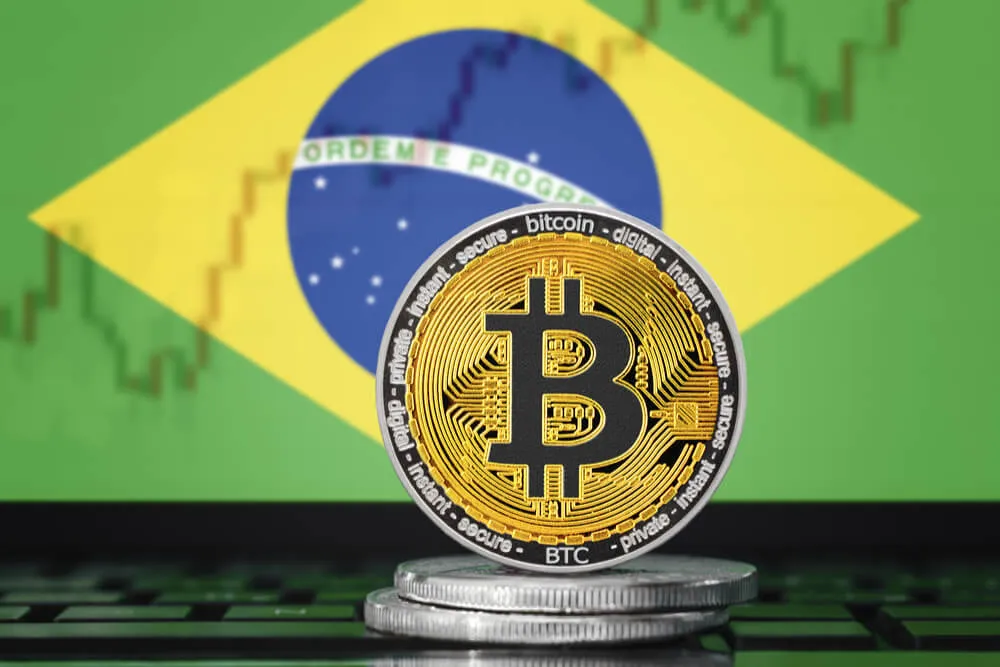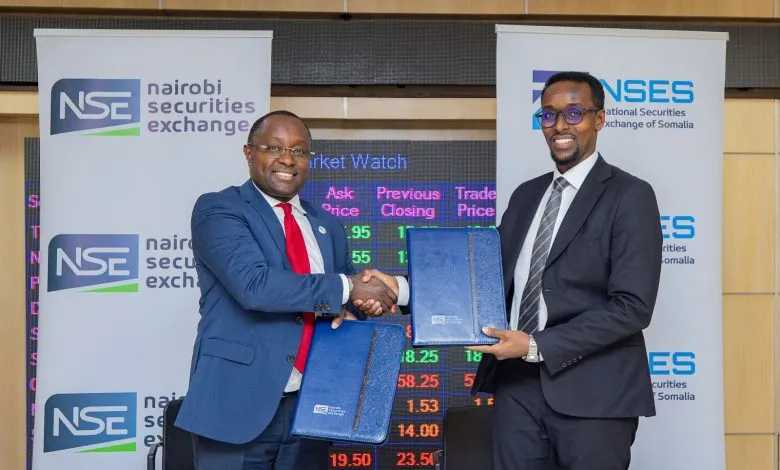Cryptocurrency has evolved from a niche technological experiment into a significant financial infrastructure enabling capital movement across major global economies, and nowhere is this transformation more evident than in Brazil, South America’s largest economy. In its latest comprehensive analysis of global cryptocurrency adoption patterns, blockchain analysis company Chainalysis estimates that the Brazilian economy moved an extraordinary $318.8 billion in cryptocurrency assets during the twelve-month period from July 2024 to June 2025. These remarkable figures underscore the accelerating adoption of digital currencies in one of Latin America’s largest and most economically sophisticated nations, demonstrating that cryptocurrency has transitioned from speculative asset to practical financial tool for millions of Brazilian citizens and businesses.
Push boundaries, reach goals, achieve more. Whether it’s ACCA, HESI A2, ATI TEAS 7, HESI EXIT, NCLEX-RN, NCLEX-PN, or Financial Literacy, we’ve got the Online course to match your ambition. Start with Serrari Ed now.
The $318.8 billion transaction volume represents more than just impressive numerical achievement—it signals a fundamental shift in how Brazilians conduct financial activities, protect wealth against inflation, access international markets, and navigate an increasingly digital economy. This adoption surge has occurred despite significant regulatory uncertainties and headwinds that might have constrained growth in less crypto-enthusiastic jurisdictions, suggesting that underlying economic and social factors are driving powerful grassroots demand for cryptocurrency services that transcends regulatory barriers.
Explosive Year-Over-Year Growth Trajectory
The transaction volume data reveals particularly striking growth dynamics when examined through a comparative lens. Brazil’s $318.8 billion represents a year-over-year growth rate exceeding 100%—effectively more than doubling the cryptocurrency transaction volumes registered during the previous twelve-month measurement period. This explosive expansion velocity highlights the growing relevance of cryptocurrency infrastructure and its expanding possibilities for the Brazilian economy and its approximately 215 million citizens who are increasingly incorporating digital assets into their financial lives.
This growth trajectory far exceeds typical adoption curves for financial technologies, suggesting that cryptocurrency in Brazil has reached or is approaching what technology adoption theorists term the “inflection point” where mainstream acceptance accelerates rapidly as network effects, infrastructure maturation, and cultural normalization create self-reinforcing adoption cycles. When a critical mass of users, merchants, and service providers participate in a payment or financial ecosystem, the utility value for all participants increases, attracting additional users and creating virtuous cycles of expanding adoption.
Regional Dominance: Brazil’s Cryptocurrency Leadership in Latin America
Brazil’s cryptocurrency adoption leadership becomes even more impressive when contextualized against other major Latin American economies, many of which have also experienced significant cryptocurrency growth but at substantially lower absolute levels. According to Chainalysis data, Brazil sits decisively atop the regional cryptocurrency adoption rankings, more than tripling transaction volumes from Argentina, which registered $93.9 billion during the same period—itself a substantial figure representing significant cryptocurrency integration into the Argentine economy.
Brazil also substantially eclipses Mexico, traditionally considered Latin America’s second-largest economy, which registered $71.2 billion in cryptocurrency transaction volumes during the measurement period. While Mexico’s cryptocurrency adoption remains significant and growing, Brazil’s nearly 4.5x advantage demonstrates the particularly strong cryptocurrency resonance with Brazilian economic conditions, regulatory environments, and user preferences.
The comparison becomes even more dramatic when examining smaller but nonetheless cryptocurrency-enthusiastic Latin American nations. Brazil bulldozed over transaction volumes from countries like Venezuela and Colombia, both of which registered volumes exceeding $40 billion but falling far short of Brazil’s commanding totals. Venezuela’s cryptocurrency adoption, while substantial relative to its smaller economic size, reflects particular factors including hyperinflation, currency controls, and economic sanctions that have driven citizens toward alternative monetary systems including both cryptocurrency and dollarization.
Colombia’s cryptocurrency adoption similarly reflects specific national circumstances including remittance flows, technology sector growth, and increasing merchant acceptance, though at scales considerably smaller than Brazil’s comprehensive cryptocurrency integration across retail, institutional, and commercial applications.
Stablecoin Dominance: The Foundation of Latin American Crypto Growth
While the Chainalysis report aggregates cryptocurrency transaction flows into a broad category encompassing all digital asset types, granular analysis reveals that the overwhelming majority of this growth stems from the global stablecoin adoption surge that manifests with particular intensity throughout Latin America due to the region’s distinctive economic characteristics including persistent inflation, currency volatility, limited banking access in underserved populations, and historical experience with monetary instability that creates powerful incentives for dollar-equivalent asset holdings.
Chainalysis estimates that approximately 90% of Brazil’s cryptocurrency transaction flows are tied specifically to stablecoins—dollar-pegged digital tokens like USDT (Tether), USDC (USD Coin), and other fiat-collateralized cryptocurrencies that maintain stable values relative to traditional currencies rather than experiencing the price volatility characteristic of Bitcoin, Ethereum, and other speculative digital assets. This stablecoin concentration reveals that Brazilian cryptocurrency adoption is driven primarily not by speculative investment motivations but by practical utility considerations including dollar access, payment efficiency, remittance facilitation, and inflation hedging.
The stablecoin dominance pattern extends throughout Latin America, where double-digit inflation rates, periodic currency crises, and limited dollar access through traditional banking channels create enormous demand for digital dollar equivalents that provide purchasing power stability, international transaction capability, and protection against local currency depreciation—all without requiring formal banking relationships, international accounts, or compliance with restrictive capital controls that many Latin American governments impose to manage their balance of payments.
For Brazilian citizens and businesses, stablecoins effectively provide “dollarization on demand” enabling them to hold dollar-equivalent assets, transact in stable units of account, and preserve wealth against the Brazilian real’s periodic volatility without requiring offshore bank accounts, foreign currency licenses, or navigation of complex regulatory restrictions that traditionally constrained dollar access for average citizens.
Broad and Consistent Adoption Across User Segments
In its analysis of Brazilian cryptocurrency adoption patterns, Chainalysis emphasized the breadth and consistency of growth across multiple dimensions. “The Brazilian advance is broad and consistent: in addition to the strong institutional performance, all transfer value ranges grew, indicating retail maturity and expansion of day-to-day use,” the blockchain analysis firm stated in its report, highlighting that cryptocurrency adoption in Brazil extends far beyond early-adopter demographics or institutional players to encompass mainstream retail users conducting everyday transactions.
The observation that “all transfer value ranges grew” carries particular significance, as it demonstrates that cryptocurrency adoption is occurring simultaneously across small-value retail transactions, medium-sized commercial payments, and large-value institutional transfers. This multi-segment growth pattern suggests that cryptocurrency infrastructure in Brazil has achieved sufficient maturity to serve diverse use cases spanning the full spectrum from micropayments and remittances through e-commerce transactions and business-to-business payments to treasury management and institutional settlements.
Retail maturity manifests through several observable phenomena including increasing merchant acceptance of cryptocurrency payments, proliferation of user-friendly wallet applications and payment interfaces, growth of cryptocurrency debit cards enabling spending at traditional point-of-sale terminals, and normalization of cryptocurrency holdings as a standard component of personal financial portfolios rather than exotic speculative positions held only by technology enthusiasts or risk-seeking investors.
The expansion of day-to-day usage represents perhaps the most significant validation of cryptocurrency’s utility proposition, as it demonstrates that digital assets have transcended their original function as speculative investment vehicles to become practical tools for conducting ordinary economic activities. When Brazilians use stablecoins to pay utility bills, purchase groceries, send money to family members, receive salary payments, or conduct any of the countless routine financial transactions that constitute daily economic life, they validate cryptocurrency’s fundamental value proposition as a superior payment and value storage technology rather than merely a speculative asset class.
Build the future you deserve. Get started with our top-tier Online courses: ACCA, HESI A2, ATI TEAS 7, HESI EXIT, NCLEX-RN, NCLEX-PN, and Financial Literacy. Let Serrari Ed guide your path to success. Enroll today.
Regional Context: Latin America’s $1.5 Trillion Cryptocurrency Economy
Brazil’s impressive cryptocurrency adoption must be understood within the broader Latin American context, where the region collectively has emerged as one of the world’s most dynamic cryptocurrency adoption zones despite—or perhaps because of—economic challenges, regulatory uncertainties, and financial infrastructure deficits that might seem to constrain digital asset usage. The Chainalysis report estimates total cryptocurrency transaction flows of $1.5 trillion for the entire Latin American region during the measurement period, positioning the region as a significant and rapidly growing component of the global cryptocurrency economy.
This $1.5 trillion regional figure encompasses diverse national economies with vastly different sizes, development levels, regulatory approaches, and cryptocurrency adoption patterns, yet united by certain common characteristics including young, technologically literate populations; significant unbanked or underbanked populations lacking access to traditional financial services; experience with inflation and currency instability creating demand for alternative value storage; large diaspora communities generating substantial remittance flows; and regulatory environments that, while often uncertain or evolving, have generally not prohibited cryptocurrency usage outright.
Brazil’s $318.8 billion contribution represents over 21% of the total Latin American cryptocurrency economy, a share roughly proportionate to Brazil’s dominance in regional GDP, population, and financial services activity. This proportional representation suggests that Brazilian cryptocurrency adoption, while impressive in absolute terms, aligns with the country’s general economic weight in the region rather than representing exceptional per-capita adoption relative to neighbors—though Brazil’s more developed financial infrastructure, larger formal economy, and greater institutional participation may enable higher transaction volumes than would occur in less economically sophisticated environments.
Centralized Exchanges: The Primary Cryptocurrency Gateway
The infrastructure through which these massive cryptocurrency volumes flow reveals important insights about how Brazilians access and utilize digital assets. According to the Chainalysis analysis, centralized exchanges—platforms like Binance, Coinbase, and Brazil-specific exchanges like Mercado Bitcoin and Bitso—intermediate approximately 64% of cryptocurrency activities with digital currencies in the Brazilian market. This centralized exchange dominance reflects several factors including user familiarity with centralized platforms offering customer support and user interfaces similar to traditional financial services, regulatory clarity that tends to be greater for licensed centralized exchanges than for decentralized alternatives, and the simple on-ramps and off-ramps that centralized platforms provide for converting between Brazilian reals and cryptocurrencies.
Centralized exchanges serve multiple critical functions in cryptocurrency ecosystems including providing liquidity enabling users to buy and sell digital assets at transparent market prices, offering custody services for users uncomfortable managing their own private keys, facilitating fiat currency on-ramps allowing users to purchase cryptocurrency using traditional payment methods, enabling off-ramps for converting cryptocurrency back to fiat when needed, and increasingly providing additional financial services like lending, staking, and interest-bearing accounts that generate yields on cryptocurrency holdings.
The 64% centralized exchange share, while dominant, nonetheless leaves substantial transaction volumes—approximately 36%—occurring through alternative channels including decentralized finance (DeFi) platforms, peer-to-peer transactions, direct wallet-to-wallet transfers, and merchant payments that bypass intermediaries entirely. This significant non-exchange volume demonstrates that Brazilian cryptocurrency users are increasingly comfortable with self-custody solutions and direct blockchain interactions rather than exclusively relying on centralized intermediaries—a maturation pattern that aligns with cryptocurrency’s fundamental decentralization ethos while potentially creating regulatory challenges as activity shifts toward platforms and protocols operating outside traditional oversight frameworks.
Decentralized Finance: Room for Growth
While decentralized finance platforms have experienced increasing participation in Brazil and throughout Latin America, the Chainalysis report notes that these protocols and applications still have substantial room for growth relative to their centralized counterparts. DeFi—encompassing automated market makers, lending protocols, derivatives platforms, and other financial services operating through smart contracts rather than traditional intermediaries—offers theoretical advantages including permissionless access, transparency, composability enabling complex financial strategies, and elimination of intermediary fees and controls.
However, DeFi adoption faces obstacles including technical complexity that intimidates mainstream users unfamiliar with concepts like liquidity pools, smart contract interactions, and gas fees; security risks from smart contract vulnerabilities and user errors that can result in irreversible fund losses; capital efficiency challenges compared to centralized platforms; and regulatory uncertainty surrounding DeFi protocols’ legal status and their participants’ compliance obligations.
Despite these challenges, DeFi growth in Brazil and Latin America appears poised to accelerate as user education improves, interfaces become more intuitive, security practices mature, and as DeFi protocols specifically target Latin American use cases like inflation-protected savings, dollar-denominated lending, and cross-border payments where decentralized solutions may offer distinct advantages over both traditional finance and centralized cryptocurrency platforms.
Regulatory Landscape: Growth Despite Headwinds
Brazil’s remarkable cryptocurrency adoption has occurred against a backdrop of evolving and sometimes uncertain regulatory conditions that might have constrained growth in less determined markets. The Brazilian Central Bank and financial regulators have taken increasingly active stances toward cryptocurrency oversight, implementing licensing requirements for exchanges, imposing reporting obligations, and exploring central bank digital currency (CBDC) alternatives that might compete with private stablecoins.
In 2022, Brazil enacted comprehensive cryptocurrency regulation establishing licensing frameworks for service providers, consumer protection standards, and regulatory oversight mechanisms administered by the Central Bank. While this regulatory clarity provides legitimacy and consumer confidence compared to completely unregulated environments, it also imposes compliance costs and operational constraints on cryptocurrency businesses that must now navigate formal regulatory requirements.
Despite these regulatory headwinds—or perhaps partly because regulatory clarity, even when restrictive, reduces uncertainty—Brazilian cryptocurrency adoption has continued accelerating, suggesting that underlying economic drivers including inflation hedging needs, payment efficiency demands, and financial inclusion imperatives create sufficiently powerful adoption incentives to overcome regulatory friction.
Economic Drivers of Brazilian Cryptocurrency Adoption
Multiple intersecting economic factors explain Brazil’s cryptocurrency adoption intensity. Brazil’s inflation, while substantially lower than the hyperinflation affecting some regional neighbors, nonetheless remains elevated by developed economy standards, consistently running in mid-to-high single digits that erode purchasing power and create incentives for alternative value storage. The Brazilian real’s periodic volatility against major international currencies, particularly the US dollar, further incentivizes holding dollar-equivalent stablecoins as hedges against currency depreciation.
Brazil’s large but financially underserved population—with tens of millions lacking traditional bank accounts or adequate access to financial services—finds cryptocurrency provides alternative financial infrastructure accessible through mobile phones without requiring formal banking relationships, credit histories, or documentation that excludes many from conventional finance.
The country’s substantial technology sector, well-developed telecommunications infrastructure providing widespread internet and mobile access, and young, digitally native population comfortable with smartphone applications and online services create ideal conditions for cryptocurrency adoption that depends critically on digital literacy and technology access.
Brazil’s significant expatriate population and incoming remittance flows create natural use cases for cryptocurrency’s cross-border payment advantages, enabling faster, cheaper international transfers compared to traditional remittance services that impose high fees and lengthy processing times.
Conclusion: A New Financial Paradigm for Latin America’s Largest Economy
Brazil’s achievement of $318.8 billion in annual cryptocurrency transaction volume, representing year-over-year growth exceeding 100% and establishing clear regional dominance, signals that cryptocurrency has evolved from experimental technology into mainstream financial infrastructure serving millions of Brazilians across diverse economic activities. The overwhelming stablecoin concentration reveals that practical utility rather than speculative investment drives adoption, while the broad participation across transaction sizes demonstrates genuine integration into everyday economic life.
As centralized exchanges continue dominating transaction flows while decentralized alternatives gradually expand their presence, Brazil’s cryptocurrency ecosystem is maturing into a comprehensive alternative financial system operating parallel to—and increasingly integrated with—traditional banking and payment infrastructure. Whether this trajectory continues accelerating, stabilizes at current high levels, or faces obstacles from regulatory interventions, economic changes, or technological challenges will shape not only Brazil’s financial future but serve as a compelling case study for cryptocurrency’s potential role in major emerging market economies worldwide.
Ready to take your career to the next level? Join our Online courses: ACCA, HESI A2, ATI TEAS 7 , HESI EXIT , NCLEX – RN and NCLEX – PN, Financial Literacy!🌟 Dive into a world of opportunities and empower yourself for success. Explore more at Serrari Ed and start your exciting journey today! ✨
Track GDP, Inflation and Central Bank rates for top African markets with Serrari’s comparator tool.
See today’s Treasury bonds and Money market funds movement across financial service providers in Kenya, using Serrari’s comparator tools.
Photo source: Google
By: Montel Kamau
Serrari Financial Analyst
7th October, 2025
Article, Financial and News Disclaimer
The Value of a Financial Advisor
While this article offers valuable insights, it is essential to recognize that personal finance can be highly complex and unique to each individual. A financial advisor provides professional expertise and personalized guidance to help you make well-informed decisions tailored to your specific circumstances and goals.
Beyond offering knowledge, a financial advisor serves as a trusted partner to help you stay disciplined, avoid common pitfalls, and remain focused on your long-term objectives. Their perspective and experience can complement your own efforts, enhancing your financial well-being and ensuring a more confident approach to managing your finances.
Disclaimer: This article is for informational purposes only and does not constitute financial advice. Readers are encouraged to consult a licensed financial advisor to obtain guidance specific to their financial situation.
Article and News Disclaimer
The information provided on www.serrarigroup.com is for general informational purposes only. While we strive to keep the information up to date and accurate, we make no representations or warranties of any kind, express or implied, about the completeness, accuracy, reliability, suitability, or availability with respect to the website or the information, products, services, or related graphics contained on the website for any purpose. Any reliance you place on such information is therefore strictly at your own risk.
www.serrarigroup.com is not responsible for any errors or omissions, or for the results obtained from the use of this information. All information on the website is provided on an as-is basis, with no guarantee of completeness, accuracy, timeliness, or of the results obtained from the use of this information, and without warranty of any kind, express or implied, including but not limited to warranties of performance, merchantability, and fitness for a particular purpose.
In no event will www.serrarigroup.com be liable to you or anyone else for any decision made or action taken in reliance on the information provided on the website or for any consequential, special, or similar damages, even if advised of the possibility of such damages.
The articles, news, and information presented on www.serrarigroup.com reflect the opinions of the respective authors and contributors and do not necessarily represent the views of the website or its management. Any views or opinions expressed are solely those of the individual authors and do not represent the website's views or opinions as a whole.
The content on www.serrarigroup.com may include links to external websites, which are provided for convenience and informational purposes only. We have no control over the nature, content, and availability of those sites. The inclusion of any links does not necessarily imply a recommendation or endorsement of the views expressed within them.
Every effort is made to keep the website up and running smoothly. However, www.serrarigroup.com takes no responsibility for, and will not be liable for, the website being temporarily unavailable due to technical issues beyond our control.
Please note that laws, regulations, and information can change rapidly, and we advise you to conduct further research and seek professional advice when necessary.
By using www.serrarigroup.com, you agree to this disclaimer and its terms. If you do not agree with this disclaimer, please do not use the website.
www.serrarigroup.com, reserves the right to update, modify, or remove any part of this disclaimer without prior notice. It is your responsibility to review this disclaimer periodically for changes.
Serrari Group 2025












